There’s a common assumption in site selection that numbers don’t lie. But in practice, they often mislead — sometimes by accident, sometimes through omission, and sometimes because the same data point can be defined a dozen different ways.
When my team receives a proposal from a community, one of the first things we do is check the data. That doesn’t mean we’re looking for mistakes; it means we’re trying to understand how the numbers were sourced, what assumptions they’re based on and whether they hold up under scrutiny. You’d be surprised how often a proposal claims a regional workforce of 200,000 when our research shows something closer to 120,000. That kind of discrepancy doesn’t just create confusion — it erodes trust.
Numbers only matter when they reflect reality on the ground.
It’s not that communities are trying to mislead you. In many cases, they’re recycling figures from a past proposal or relying on a source that’s now outdated. But if a company makes a decision based on that inflated number — especially for labor-intensive operations — the consequences are real. You can’t afford to discover midway through hiring that the people simply aren’t there.
Workforce data is one of the trickiest parts of the site selection process because it’s not just about headcount. It’s about availability, skill level, training infrastructure and cultural fit. It’s one thing for a region to report that it has 200 welders. It’s another to know how many of those are actually available for hire, how many have transferable skills and whether there’s a training pipeline that can support your needs in the next 12 to 24 months.
200,000
That’s where the distinction between quantitative and qualitative data becomes critical. Numbers can tell you how many people live in a labor shed. They can’t tell you whether those people are job-ready, or whether your company will be seen as a desirable employer. They don’t capture whether your wages will be competitive in that market, or whether a similar employer nearby is already hiring aggressively from the same pool.
A beautiful spreadsheet can’t hire your workforce.
The same dynamic applies to infrastructure. A proposal might state that transmission lines are “nearby” — but how nearby? And what does “available” mean in this context? Are the lines energized and within 1,000 feet of the site? Or are they several miles out, requiring easements, permitting and months of capital work? A few words in an RFI response can mask major cost and schedule implications.
Sometimes the issue isn’t the data itself, but the framing. When a proposal includes a regional labor force figure, it’s fair to ask what region they’re using. There may be five or six different ways to draw the boundaries, and the results can vary dramatically depending on where you draw the line. If you’re looking at a cross-border metro area with different unionization profiles on either side, it matters a great deal which workers are being counted and which aren’t.
Ask what region is being counted — and who’s left out.
In recent years, my team has started to use AI tools like ChatGPT to help brainstorm new research approaches when we encounter unfamiliar questions. But even with those tools, everything still gets fact-checked and validated through public and proprietary sources. If your team is reviewing proposals and feeling unsure about the accuracy of a claim, don’t hesitate to dig deeper. Ask follow-up questions. Request sources. Confirm numbers with third-party data. That level of diligence might seem excessive at first — but it’s what protects your investment.
At the end of the day, numbers only mean something when they reflect reality on the ground. A beautiful spreadsheet can’t hire your workforce or bring power to your site. But it can help you understand whether the people behind the proposal know what they’re talking about — or whether they’re simply repeating what worked last time.






